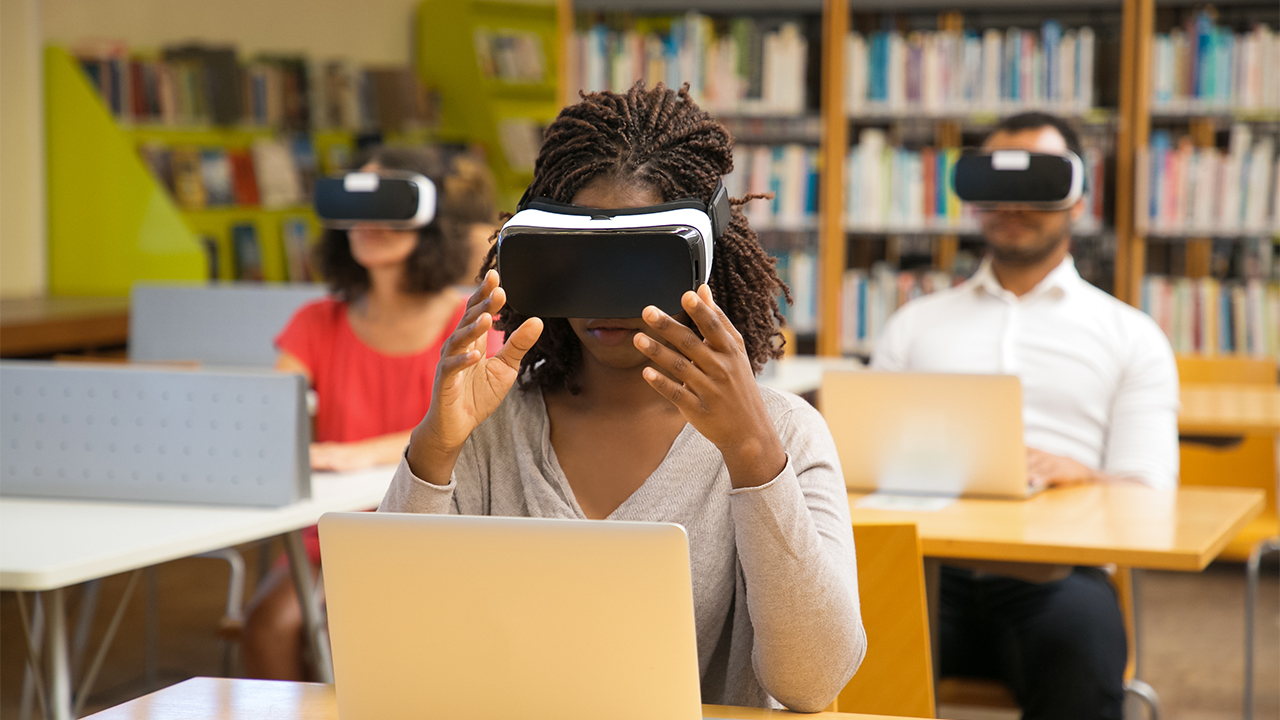Virtual Reality (VR) and Augmented Reality (AR) have rapidly developed as transformative technologies in many industries. Their potential effect on education is indisputable, offering immersive and interactive learning experiences that involve students like never before. However, along with the several benefits, there are some challenges which educators and institutions should navigate.
Improved Learning Engagement: VR and AR provide students with hands-on, immersive experiences which captures their attention and foster active participation. Complex concepts become tangible, leading to an improved retention and deeper understanding.
Interactive Learning: These technologies give learners to interact with 3D objects and scenarios, making abstract subjects more concrete. Without leaving the classroom, students can dissect virtual organisms, conduct scientific experiments or even explore historical sites.
Personalized Learning Paths: VR and AR allow educators to tailor content to individual learning styles. Students can progress at their own pace and revisit materials as needed, encouraging a more personalized and effective learning journey.
Real-World Simulations: Fields such as aviation, engineering and medicine benefit from VR and AR simulations which provides a safe environment for practicing complex procedures. This hands-on experience will improve the skill development and confidence.
Global Learning: VR and AR bridge geographical gaps, permitting students to practically travel to different parts of the world and experience diverse cultures, enhancing their global awareness.
Challenges of Participating VR and AR in Education
Cost: Employing VR and AR can be costly due to the need for specialized equipment and software. Institutions must invest in devices and training to ensure effective use.
Technical Challenges: Compatibility issues or technical glitches can disturb the learning experience. Teachers need to be capable in troubleshooting and maintaining the technology.
Content Development: Creating a high-quality VR and AR educational content requires expertise and resources. It is also time consuming while developing engaging and curriculum-aligned materials.
Health and Safety Concerns: Continuously using VR headsets can cause discomfort, motion sickness, and eye strain, mainly in younger learners. Balancing usage with health considerations is important.
Pedagogical Adaptation: Integrating VR and AR requires teachers to adopt their teaching methods to increase the potential of these technologies. For some educators, this transition can be challenging.
In conclusion, VR and AR have the capability to revolutionize education by offering dynamic, immersive and interactive learning experiences. Since challenges exist, technological advancements and increasing accessibility steadily address these complications. As educational institutions discover the possibilities of VR and AR, finding the right balance between benefits and challenges will be crucial in shaping the future of learning.








